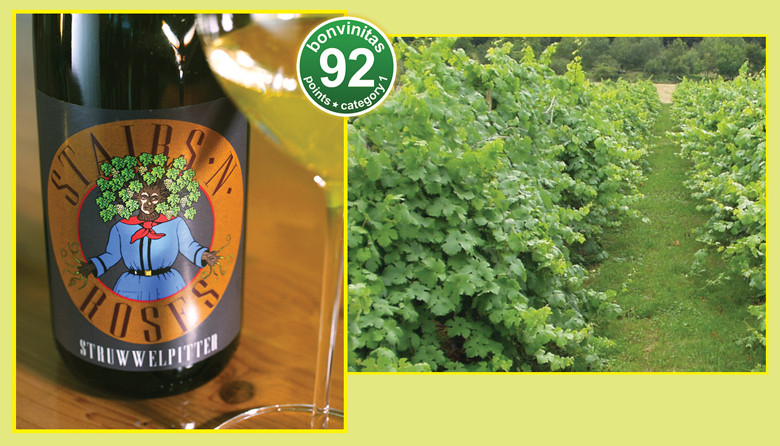Weingut Stairs n' Roses: Lots of drinking pleasure through 'antiauthoritarian' vine training
Julia Molitor-Justen and Dr. Daniel Molitor call this cuvée from such minimal pruning vineyards STRUWWELPITTER
https://www.bonvinitas.com/media/reviews/photos/thumbnail/780x480c/d3/48/6a/weingut-stairs-n-roses-lots-of-drinking-pleasure-through-antiauthoritarian-vine-training-24-1752378462.jpg Weingut Stars n height="233" />Floral scent of candied lemon, apple compote, herbal candy; on the palate lively and strong with hints of a natural lemon drink and a touch of chili pepper in the finish, in short: a wine that is fun, and for which I noted 92 bonvinitas points (green for dry up to 12%) during tasting: 2023 STRUWWELPITTER dry, a cuvée of Riesling, Müller-Thurgau as well as the PIWI varieties Cabernet Blanc and Sauvignac, quality wine Mosel, estate bottled by Weingut Julia Molitor-Justen and Dr. Daniel Molitor in Kinheim-Kindel/Mosel with a pleasant 10.5% alcohol and dry. Well suited as an aperitif with finger food, with smoked mackerel or stuffed pancakes.
Weingut Stars n height="233" />Floral scent of candied lemon, apple compote, herbal candy; on the palate lively and strong with hints of a natural lemon drink and a touch of chili pepper in the finish, in short: a wine that is fun, and for which I noted 92 bonvinitas points (green for dry up to 12%) during tasting: 2023 STRUWWELPITTER dry, a cuvée of Riesling, Müller-Thurgau as well as the PIWI varieties Cabernet Blanc and Sauvignac, quality wine Mosel, estate bottled by Weingut Julia Molitor-Justen and Dr. Daniel Molitor in Kinheim-Kindel/Mosel with a pleasant 10.5% alcohol and dry. Well suited as an aperitif with finger food, with smoked mackerel or stuffed pancakes.
On Minimal Pruning
Some winemakers have been using this minimal pruning method for several years, in which the vines are pruned much less and allowed to grow more naturally. After all, the vine is actually a climbing plant that grows up trees. Daniel Molitor: “We were one of the pioneers. Our first minimal pruning vineyards are already about 20 years old. The row spacing needs to be a bit wider, the grapes become slightly smaller and looser, and grow more in the shade — which is advantageous in times of climate change, because we get fresher aromas in the wines and fewer overripe ones. We also save a lot of labor time, harvest mechanically, and have already converted about half of our 7 ha vineyard to minimal pruning.” Because the dense leaf canopy makes fungal control more difficult, fungus-resistant varieties, so-called PIWI varieties, which are significantly more resistant to fungal diseases, are suitable. “We have increasingly planted PIWI varieties, but wait to convert them to minimal pruning until the vines are about 10 years old, as they then root deeper and absorb more moisture from the soil. A larger canopy naturally results in more evaporation,” Molitor further explains. All in all, he has had good experiences with it and wants to continue the transition.

 Weingut Stairs n' Roses, minimal pruning in winter. Then cut vertically along the rows by machine
Weingut Stairs n' Roses, minimal pruning in winter. Then cut vertically along the rows by machine
Text: Dieter Simon. Bottle photo and header image: bonvinitas; remaining photos: PR unless otherwise noted.





